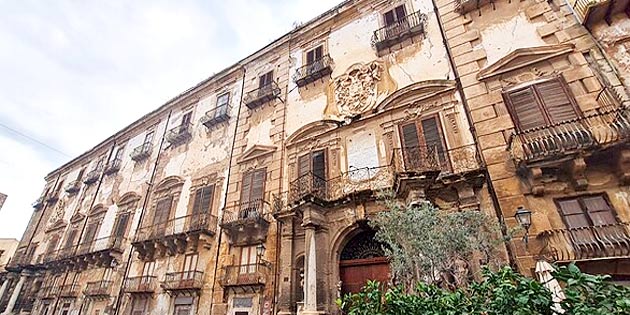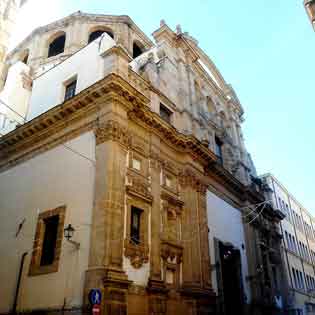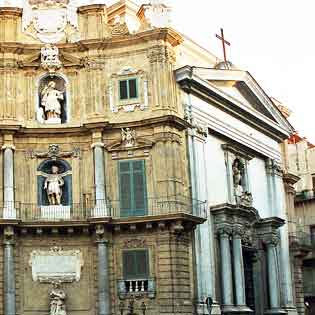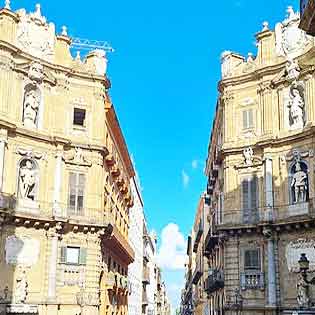Alliata di Villafranca Palace in Palermo
The Palazzo Alliata is a historic residence in Palermo.
It was built in 1576 at the behest of Don Alojsio of Bologna, Baron of Montefranco, on his own land that was close to the ancient medieval city walls. The following year Don Alojsio also supported the construction of the church of S. Nicolò dei Carmelitani, right in front of his palace, where he had placed the burial for himself and his heirs.
About a century later, the palace was bought by the prince of Villafranca Francesco Alliata and Paruta, who carried out a demanding work of embellishment and expansion of the building. Following the earthquake in 1751, the building was severely damaged, so it was that Prince Domenico Alliata entrusted the renovation, consolidation and stylistic reinterpretation to the architect Giovan Battista Vaccarini, one of the greatest representatives of Sicilian Baroque. On this occasion the facade was radically transformed and took on the monumental aspect that we can observe today where the rigorous symmetry of the two portals dominated by two large coats of arms of the Alliata family, while the interiors of the halls on the main floor were frescoed by the painter Gaspare Serenario . Unfortunately, almost all the frescoes were lost following the last war. When, in 1734, Prince Giuseppe Alliata obtained the privilege of contracting postal services for Sicily from Charles VI of the Habsburgs, the postal service was exercised in the Villafranca palace, where the vast layout of the palace and the large colonnaded courtyard allowed convenient performance of the service; furthermore, the large stables housed the carriages used for the distribution of mail, horses and all the harnesses used by postal couriers. The structure of the building takes up the classic one of an eighteenth-century noble palace: the ground floor is occupied by large stables, sheds, warehouses, kitchens and other rooms for the conservation of hay and straw. On the middle floor were the rooms set up for the family archive, the library, the wardrobe, the laundry room, and the accommodation for the staff of the stables and the numerous servants of the house. The upper floor, which was reached via a large red marble staircase for the exclusive use of the princes, consisted of several lodgings intended to accommodate the owner's family unit, that of the eldest son, the cadet children with their families, relatives, and guests. Finally, on the main floor, the huge spaces were intended for the reception rooms with the spectacular series of halls that overlooked the main front of the building, filled with precious objects and precious collections of art that have come down to our days.



